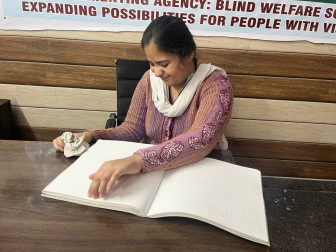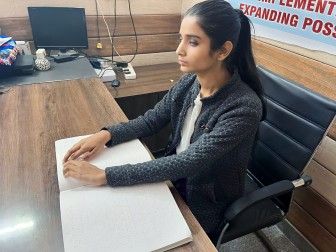Meal planning and preparation are daily activities that can be empowering and rewarding for anyone, including individuals who are blind or visually impaired. Relying on enhanced senses of taste and touch can transform the kitchen into a place of confidence and creativity, allowing for safe, nutritious, and delicious meals. Here, we explore how these senses can play a pivotal role in meal planning and cooking, along with practical tips to make the process enjoyable and efficient.
For blind individuals, the sense of taste and touch becomes more refined and essential in the kitchen. When sight is limited or absent, taste becomes a crucial guide in selecting flavors that complement one another, ensuring that the dishes created are flavorful and balanced. Touch, on the other hand, provides a way to navigate ingredients, utensils, and cooking tools, giving confidence in handling food safely.
While meal planning, taste takes center stage. Understanding and balancing the five basic tastes—sweet, salty, sour, bitter, and umami—can lead to diverse and satisfying meals. By focusing on taste, visually impaired individuals can:
Touch is an incredible asset in food preparation, as it allows for:
Cooking relies on multiple senses, and with enhanced use of taste and touch, blind individuals can enjoy safe and efficient meal preparation:
Building confidence comes with practice, and with the right strategies in place, meal planning and preparation can be enjoyable. Consider these tips:
Safety is crucial when preparing meals, and touch can aid in ensuring safe practices:
Meal planning and preparation for the blind doesn’t have to be limited to basic dishes. By leveraging taste and touch, cooking can be a fulfilling creative outlet:
Cooking and meal planning for individuals who are blind or visually impaired don’t need to be daunting tasks. By embracing the power of taste and touch, cooking becomes an empowering and creative process. Whether you’re preparing a simple meal or experimenting with new recipes, the kitchen can be a space of independence, enjoyment, and sensory engagement.
With the right tools, techniques, and mindset, anyone can master the art of cooking, regardless of visual ability. Taste and touch offer a unique way to experience food, making the process of meal preparation a source of pride and nourishment for the soul.
By contributing to our feature donation campaigns, you are not just supporting us,
you are fostering independence, education, and accessibility for the people with blindness.
We are providing free shelter, food and educational support to the abandoned visually impaired girls residing at BWS.
₹1146562
raised of ₹2000000 Goal
57%
4 Days left
573 Supporters
Maa and Papa weren’t the happiest when I was born. They thought I was a burden to them.
₹769463
raised of ₹2000000 Goal
38%
4 Days left
590 Supporters
The Walking Canes have proved a useful tool to millions of blind people in navigating their environments with confidence and ease.
At our organization, we provide a nurturing environment for visually impaired girls, helping them lead fulfilling lives despite their challenges.
The following stories highlight the transformative journey of these remarkable individuals within our organization.

Hailing from Delhi, Sneha came to Blind Welfare Society in July 2023.
.jpeg)
Hailing from a small village of Gwalior district, Madhya Pradesh, Archana came to Blind Welfare Society in July 2023

Chhavi’s journey is a testament to the transformative power of education and the invaluable support provided by the Blind Welfare Society.